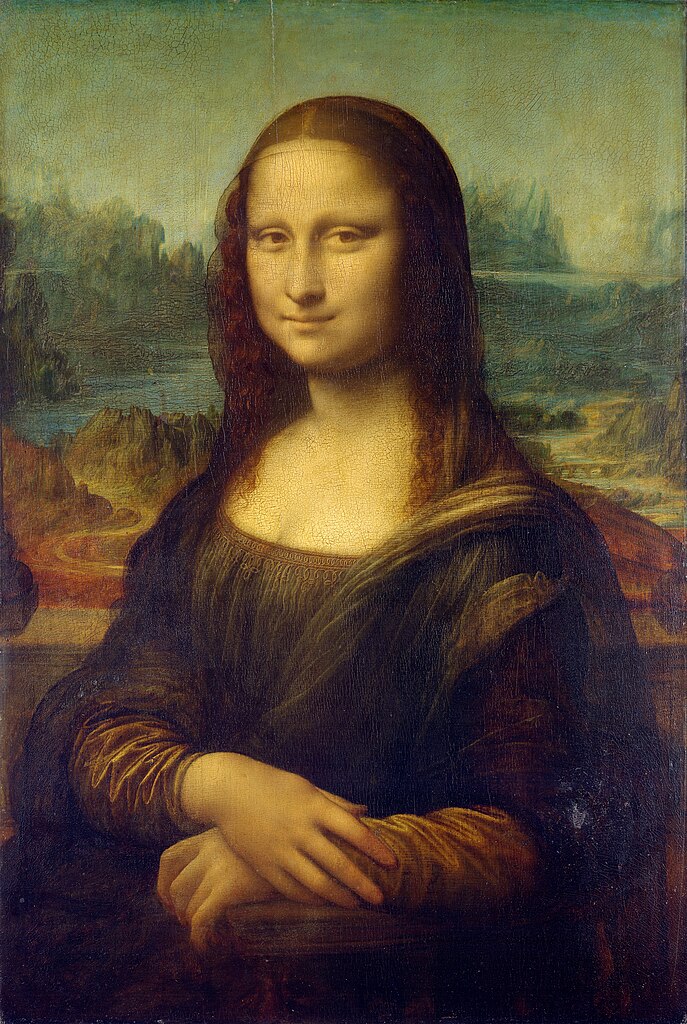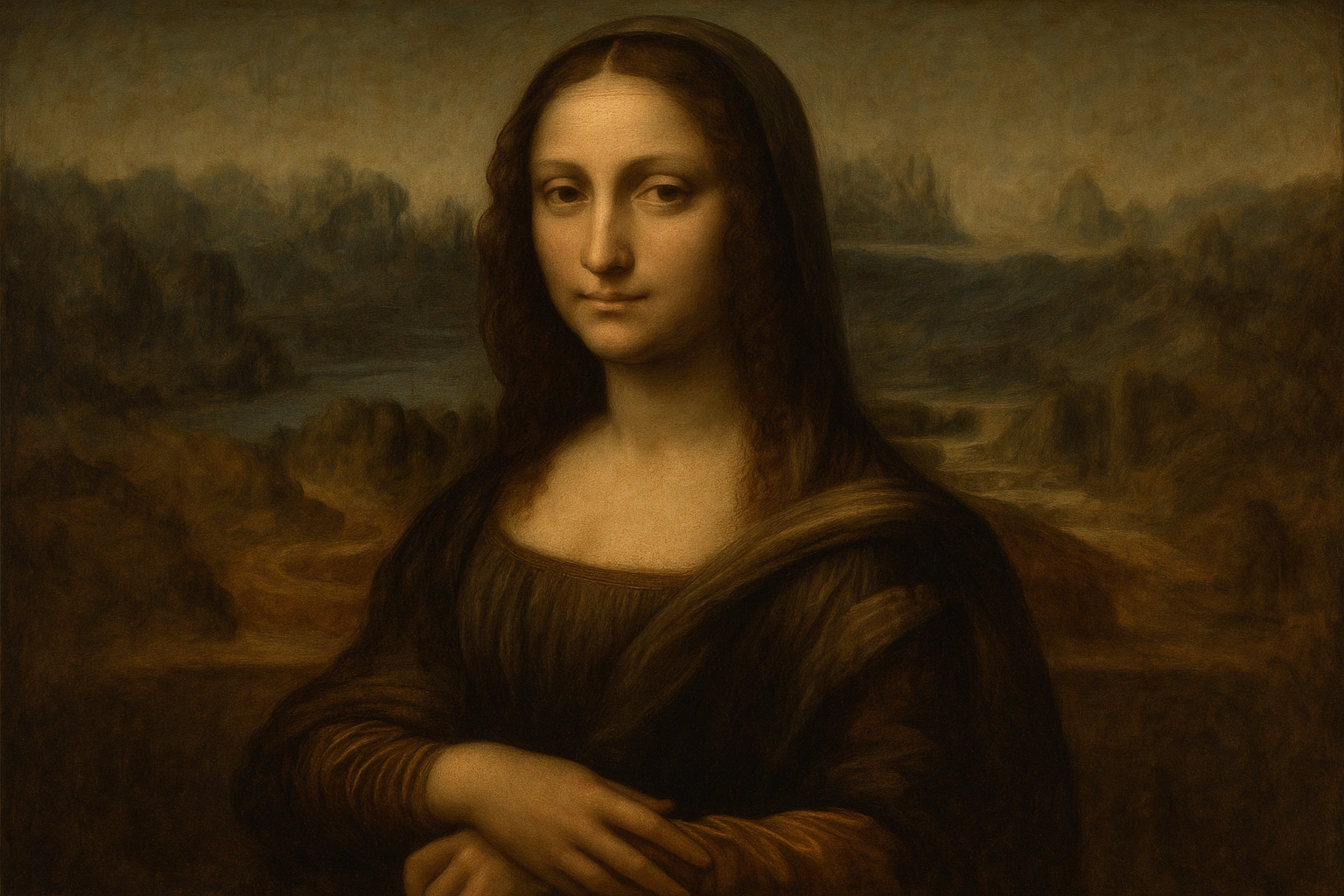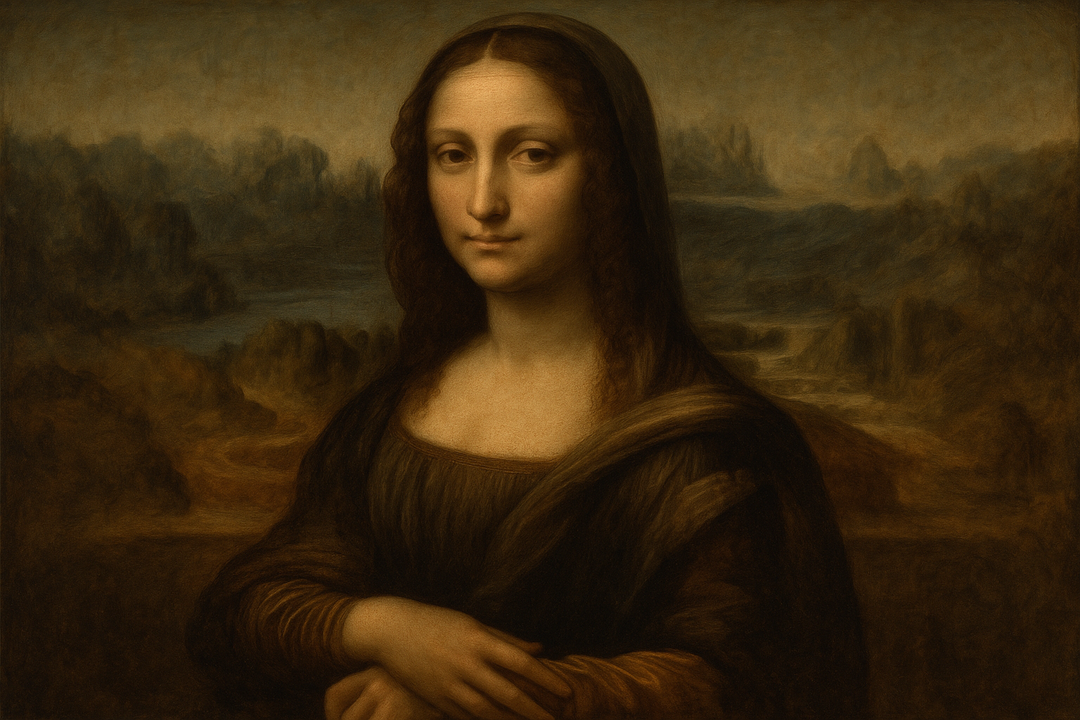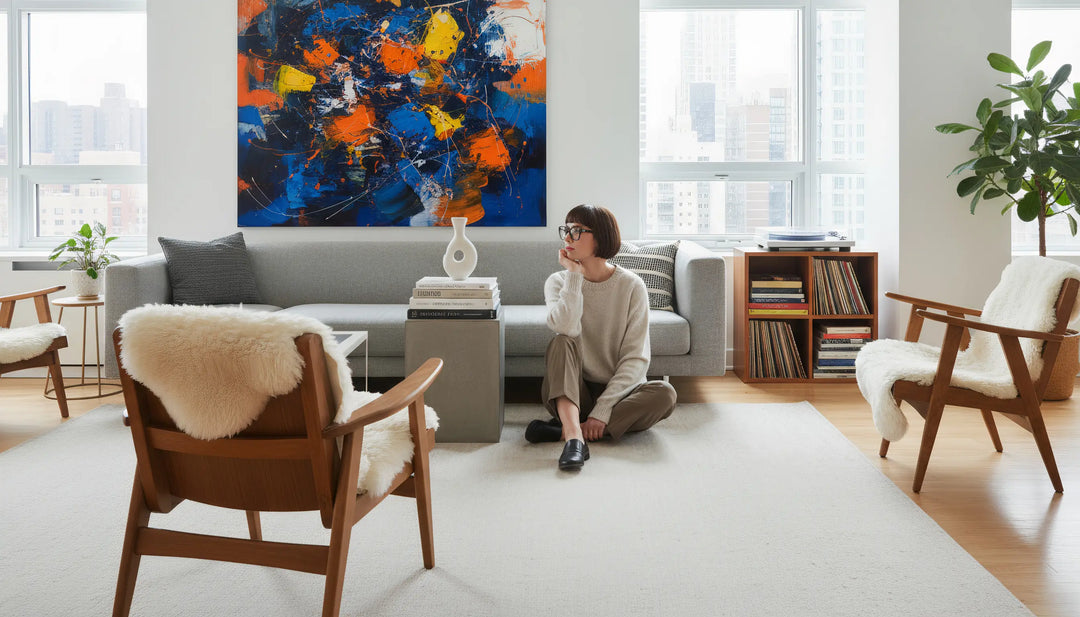Key Takeaways
- Leonardo da Vinci (1452-1519) was the archetypal "Renaissance man" - excelling in art, science, and engineering
- His masterworks include the Mona Lisa and The Last Supper, revolutionizing portraiture and composition
- Scientific contributions spanned anatomy, engineering, optics, and natural philosophy
- His techniques like sfumato and chiaroscuro continue to influence contemporary artists worldwide
📚 Table of Contents
🎨 Art & Masterpieces
🔬 Techniques & Science
🏠 Interactive & More
When we think of the Renaissance, one name stands above all others: Leonardo da Vinci. This extraordinary Italian polymath didn't just participate in the cultural awakening of his era—he defined it. From the enigmatic smile of the Mona Lisa to revolutionary flying machine designs centuries ahead of his time, Leonardo's genius transcended every boundary between art and science.
Born in the small Tuscan town of Vinci in 1452, Leonardo di ser Piero da Vinci would grow to become history's most celebrated "Renaissance man." His insatiable curiosity and unparalleled skill transformed how we understand both artistic expression and scientific inquiry, creating a legacy that continues to inspire creators, inventors, and thinkers today.

The Mona Lisa (c. 1503-1519) - Leonardo's most famous masterpiece, housed in the Louvre Museum
🎨 More Leonardo da Vinci Masterpieces

Lady with an Ermine
(c. 1489-1491)

Salvator Mundi
(c. 1500)

Self-Portrait
(c. 1512)
🎨 Discover Your Leonardo da Vinci Art Style
Find the perfect Renaissance-inspired art for your space with our personalized quiz
The Early Years: From Vinci to Florence
Leonardo's journey began in the rolling hills of Tuscany, where he was born on April 15, 1452, in the small town of Vinci. The illegitimate son of a notary, Ser Piero, and a peasant woman named Caterina, Leonardo's unconventional start in life may have actually freed him from the traditional career paths expected of legitimate heirs.

The Last Supper (1495-1498) - Revolutionary mural showcasing Leonardo's mastery of perspective and composition
At age 14, Leonardo was apprenticed to Andrea del Verrocchio, one of Florence's most respected artists and the teacher of future masters like Botticelli. This workshop became Leonardo's university, where he learned not just painting and sculpture, but also mathematics, engineering, and the scientific principles that would later revolutionize his approach to art.
Masterworks That Defined an Era
Leonardo's artistic output may have been relatively small—only about 15 paintings survive today according to art historians—but each work represents a quantum leap in artistic achievement. His approach to painting was revolutionary, combining precise anatomical knowledge with innovative techniques that created unprecedented realism and emotional depth.
The Mona Lisa: Portrait of Perfection
Painted between 1503 and 1519, the Mona Lisa (La Gioconda) is perhaps the most recognized artwork in human history. Leonardo's subject, believed to be Lisa Gherardini, wife of a Florentine merchant, becomes the vessel for showcasing several revolutionary techniques that would define Renaissance portraiture.
The painting's fame rests not just on the subject's enigmatic smile, but on Leonardo's masterful use of sfumato—the subtle gradation of tones without harsh outlines. This technique, which Leonardo perfected, creates the soft, hazy quality that makes the Mona Lisa appear almost alive, her expression shifting depending on the viewer's perspective.

The Vitruvian Man (c. 1490) - Symbol of the perfect blend of art and science during the Renaissance
The Last Supper: Revolutionary Composition
Painted on the wall of the Santa Maria delle Grazie convent in Milan between 1495 and 1498, The Last Supper represents one of the most ambitious artistic undertakings of the Renaissance. Leonardo chose to depict the moment when Christ announces that one of his disciples will betray him, capturing not just the scene but the psychological drama unfolding in each apostle's reaction.
Why It Matters Today: Mathematical Precision Meets Human Emotion
Modern scholars recognize The Last Supper as a masterclass in psychological narrative. Leonardo arranged the twelve apostles in four groups of three, each cluster representing different emotional responses—shock, denial, anger, and contemplation. The geometric precision of the perspective lines all converge on Christ's head, creating both spiritual and mathematical harmony that continues to influence contemporary artists and modern abstract compositions.
Other Notable Works
Beyond his most famous pieces, Leonardo created numerous other masterworks that showcase his range and innovation:
- Lady with an Ermine (1489-1491) - Portrait of Cecilia Gallerani demonstrating Leonardo's ability to capture both physical likeness and personality
- The Annunciation (1472-1475) - Early masterpiece showing his developing mastery of perspective and natural detail
- Salvator Mundi (c. 1500) - Painting of Christ as Savior of the World, sold for a record $450.3 million in 2017
The Scientist-Artist: Revolutionary Techniques
What truly set Leonardo apart from his contemporaries was his systematic, scientific approach to art. He didn't simply paint what he saw; he sought to understand the underlying principles that made his subjects work, move, and exist in space.
Anatomical Studies
Leonardo conducted detailed anatomical dissections, creating over 240 anatomical drawings according to Britannica that were centuries ahead of their time. These studies weren't merely academic exercises—they directly informed his artistic work, allowing him to depict human forms with unprecedented accuracy and vitality.

Lady with an Ermine (1489-1491) - Demonstrating Leonardo's mastery of portraiture and symbolism
The Vitruvian Man: Art Meets Science
Perhaps no single work better exemplifies Leonardo's fusion of art and science than his famous drawing of the Vitruvian Man (c. 1490). According to Stanford University, this drawing "provides an excellent early example of the way in which his studies of proportion fuse artistic and scientific objectives."
The drawing illustrates the ideal human proportions described by the ancient Roman architect Vitruvius, showing how a man with arms and legs extended can be inscribed in both a circle and a square. But Leonardo's version goes beyond mere illustration—it represents his belief that understanding the mathematical principles underlying natural forms was essential to creating truly great art.
Scholarly Insight: The Blueprint for Human-Centered Design
Contemporary design theorists recognize the Vitruvian Man as the foundation of human-centered design principles. The drawing's precise measurements (span equals height, navel as geometric center) established proportional systems still used in contemporary art and architecture. Leonardo's integration of circle (representing the spiritual/divine) and square (representing the earthly/material) created a visual philosophy that bridges the gap between scientific measurement and artistic intuition—a principle that resonates in today's approach to interior design and spatial harmony.
Explore Renaissance Mastery: Our collection features prints inspired by the greatest masters of the Renaissance era, perfect for bringing classical elegance into modern spaces:
- Famous Artists Wall Art Prints - Museum-quality reproductions of masterpieces
- Vintage Landscape Prints - Classic scenes capturing Renaissance beauty
- Abstract Art Prints - Modern interpretations of classical themes
Scientific Innovations and Inventions
Leonardo's notebooks, written in his characteristic mirror script, reveal a mind constantly probing the mysteries of the natural world. His scientific investigations spanned an extraordinary range of disciplines, often anticipating discoveries that wouldn't be formally recognized for centuries.
Engineering Marvels
Leonardo's engineering designs were revolutionary for their time. He conceived flying machines, tanks, submarines, and parachutes—inventions that wouldn't become reality until the 20th century. His detailed studies of water flow led to innovations in hydraulic engineering, while his military designs anticipated modern warfare technology.
Natural Philosophy
Leonardo's approach to understanding nature was fundamentally modern. He believed in direct observation, systematic experimentation, and mathematical analysis—principles that would later form the foundation of the scientific method. His studies of geology, botany, and optics contributed to our understanding of the natural world.

The Annunciation (1472-1475) - Early masterpiece showing Leonardo's developing style and attention to natural detail
Techniques That Revolutionized Art
Leonardo's artistic innovations weren't just aesthetic choices—they were scientific breakthroughs that fundamentally changed how artists approached their craft. His techniques continue to influence contemporary artists and remain central to art education worldwide.
Sfumato: The Art of Soft Gradation
Leonardo pioneered the technique of sfumato (Italian for "smoky"), which involves the subtle gradation of tones and colors without harsh outlines. This technique creates an almost atmospheric quality in paintings, allowing forms to emerge from and dissolve into their surroundings with breathtaking realism.
Chiaroscuro: Mastering Light and Shadow
Leonardo's use of chiaroscuro—the dramatic interplay of light and shadow—added unprecedented depth and volume to his paintings. This technique not only created more realistic three-dimensional effects but also enhanced the emotional impact of his works. This mastery of light continues to influence artists today, particularly evident in dramatic landscape compositions and contemporary abstract art that emphasizes contrast and mood.
Atmospheric Perspective
Understanding how atmosphere affects our perception of distant objects, Leonardo developed sophisticated techniques for creating depth through color and clarity changes. Objects in his backgrounds appear hazier and bluer, mimicking how our eyes actually perceive distant landscape elements.
Legacy and Modern Influence
More than 500 years after his death, Leonardo da Vinci's influence permeates virtually every aspect of human creative endeavor. His integration of art and science created a template for Renaissance thinking that continues to inspire innovators, artists, and scientists today.
Contemporary Art and Design
Modern artists continue to study and employ Leonardo's techniques. Fashion designers reference his anatomical studies, architects draw inspiration from his engineering designs, and digital artists use principles of sfumato and chiaroscuro in computer graphics.
Scientific Innovation
Leonardo's approach to systematic observation and experimentation helped establish principles that remain central to scientific inquiry. His multidisciplinary perspective—seeing connections between seemingly unrelated fields—continues to drive breakthrough innovations in technology and medicine.

Salvator Mundi (c. 1500) - Most expensive painting ever sold at auction (R8.3 billion in 2017)
"Painting is poetry that is seen rather than felt, and poetry is painting that is felt rather than seen." - Leonardo da Vinci
Bringing Renaissance Beauty Into Your Home
Leonardo's timeless appeal lies in his ability to capture both the measurable and the mysterious aspects of human experience. His works speak to our desire for beauty, knowledge, and connection with the profound truths of existence.
For art lovers looking to incorporate Renaissance-inspired pieces into their homes, consider the enduring principles that made Leonardo's work so compelling:
- Emotional Depth: Choose pieces that convey genuine emotion and human connection
- Technical Excellence: Seek out works that demonstrate mastery of artistic fundamentals
- Intellectual Interest: Select art that rewards close observation and contemplation
- Timeless Appeal: Invest in pieces that transcend temporary trends
Discover Renaissance-Inspired Collections: Transform your space with art that captures the spirit of Leonardo's innovative genius:
- Vincent van Gogh Collection - Post-Impressionist masterpieces with Renaissance foundations
- Gustav Klimt Prints - Art Nouveau elegance with classical influences
- Abstract Expressionism Guide - Understanding modern artistic movements
The Eternal Renaissance
Leonardo da Vinci died on May 2, 1519, at the Château du Clos Lucé in France, where he had spent his final years under the patronage of King Francis I. Yet his death marked not an end but a beginning—the start of an influence that would grow with each passing century.
Today, in our age of digital innovation and scientific breakthrough, Leonardo's example feels more relevant than ever. His relentless curiosity, his refusal to accept artificial boundaries between disciplines, and his commitment to both aesthetic beauty and empirical truth offer a model for how we might approach the challenges and opportunities of our own time.
Whether you're an artist seeking to understand the fundamentals of your craft, a scientist looking for creative approaches to complex problems, or simply someone who appreciates the extraordinary achievements of the human spirit, Leonardo da Vinci's legacy offers inexhaustible inspiration. His life reminds us that the greatest achievements come not from limiting ourselves to single disciplines, but from embracing the full spectrum of human knowledge and creativity.
In bringing Leonardo-inspired art into our homes, we do more than decorate our walls—we invite the spirit of the Renaissance into our daily lives, surrounding ourselves with reminders of what human beings can achieve when curiosity, skill, and imagination unite in pursuit of excellence.















